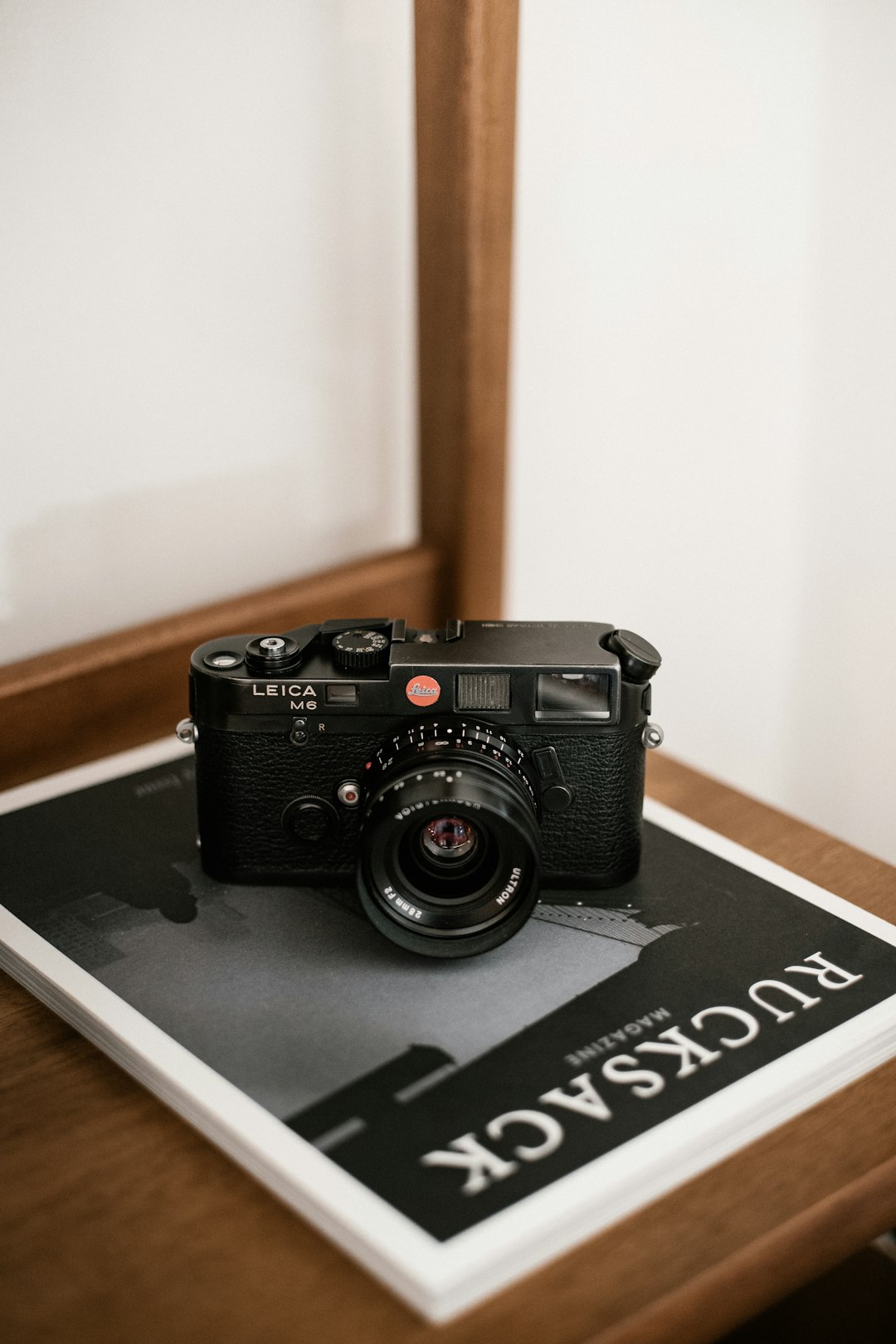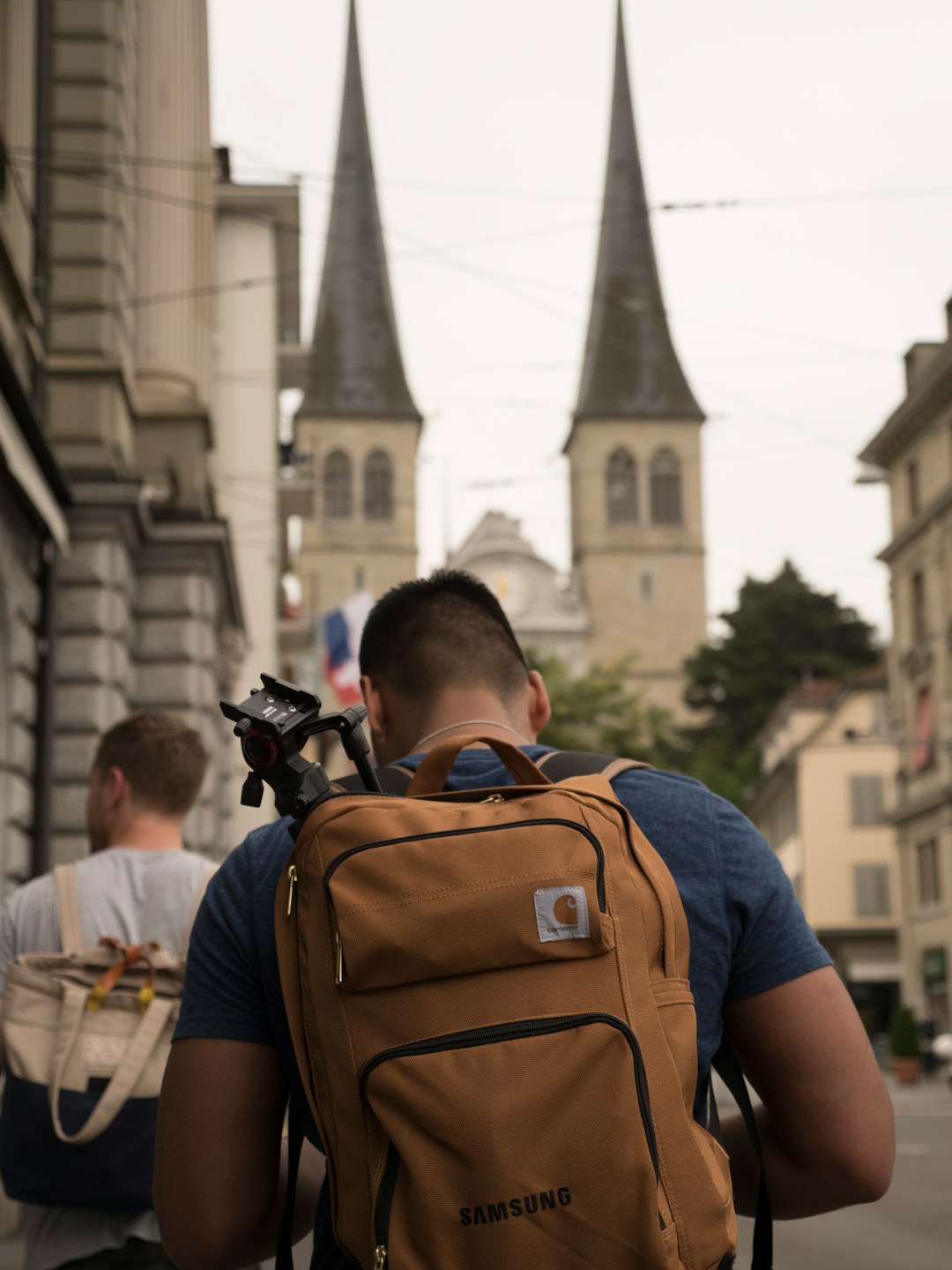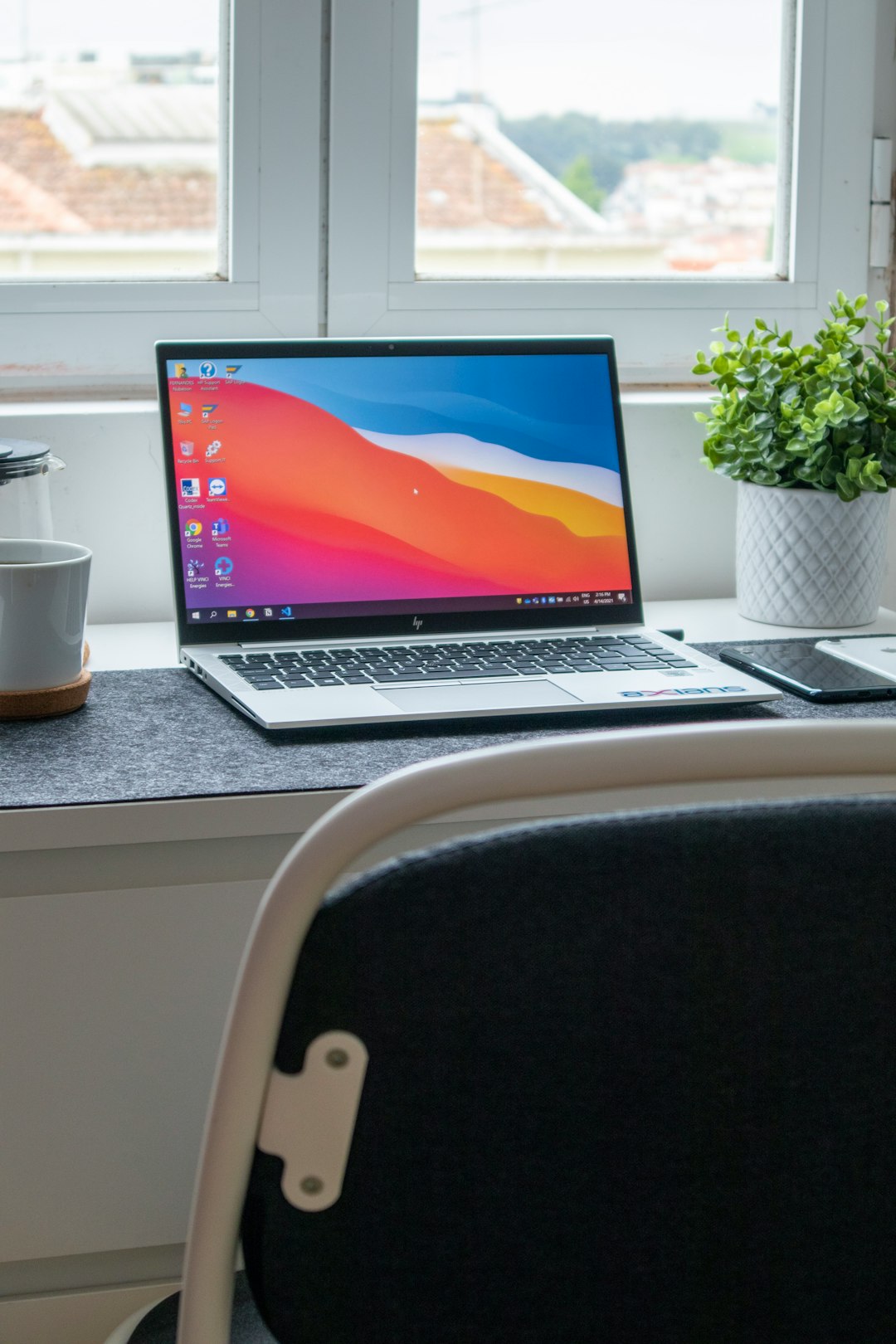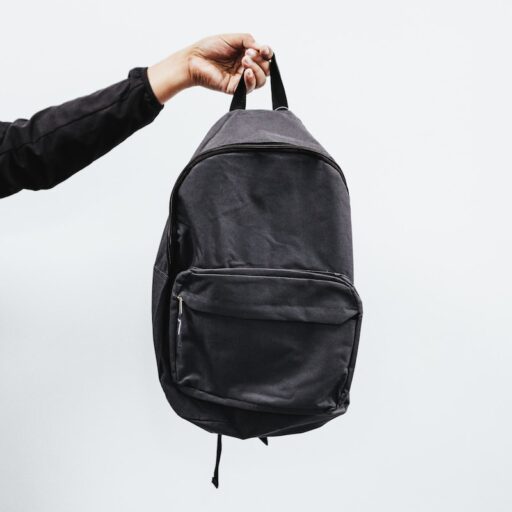Support our educational content for free when you purchase through links on our site. Learn more
🎒 17 Must-Know Backpack Statistics 2020 Worldwide
Did you know that in 2020, the global backpack market was valued at a whopping $17 billion? That’s right—while many industries took a hit during the pandemic, backpacks quietly became the unsung heroes of daily life, from remote workers lugging laptops to outdoor enthusiasts hitting the trails. But what exactly drove this surge, and which types of backpacks dominated the scene worldwide? Stick around as we unpack the most comprehensive and surprising backpack statistics from 2020 that every gear lover, retailer, or curious shopper needs to know.
Whether you’re hunting for the perfect travel pack or curious about how sustainability and tech innovations shaped the market, this article reveals all. We’ll explore regional market shares, consumer preferences, material trends, and even how COVID-19 reshaped the backpack landscape. Ready to discover which brands led the charge and what the future holds? Let’s dive in!
Key Takeaways
- Outdoor and hiking backpacks dominated 2020, capturing over 50% of the market share as people sought safe, socially-distanced activities.
- North America led the global market, but the Asia-Pacific region showed the fastest growth, signaling shifting consumer dynamics.
- Tech integration and sustainability became major trends, with smart backpacks and eco-friendly materials gaining popularity.
- COVID-19 reshaped buying habits, boosting demand for laptop-friendly and outdoor backpacks while travel packs faced challenges.
- Top brands like Osprey, Samsonite, and The North Face continued to innovate and lead the market with durable, functional, and stylish designs.
Ready to shop the best backpacks of 2020? Check out these top brands:
- Osprey Backpacks: Amazon | Osprey Official Website
- Samsonite Travel Backpacks: Amazon | Samsonite Official Website
- The North Face Backpacks: Amazon | The North Face Official Website
Table of Contents
- ⚡️ Quick Tips and Facts
- 🎒 Unpacking the Past: A Brief History of Backpack Market Evolution
- 🌍 The Global Backpack Market in 2020: A Snapshot
- 📊 Regional Rucksacks: A Deep Dive into Geographic Market Shares (2020)
- 🎒 By the Numbers: Backpack Market Segmentation by Type (2020 Data)
- 🧵 Material Matters: Dominant Fabrics and Trends in 2020 Backpacks
- 🚶♀️ Who’s Carrying What? End-User Demographics and Preferences (2020 Insights)
- 📈 Driving Forces: Key Market Growth Drivers for Backpacks in 2020
- 🚧 Bumps in the Road: Challenges and Restraints Facing the Backpack Industry (2020)
- 🏆 The Big Players: Competitive Landscape and Market Leaders (2020)
- 🛍️ Consumer Chronicles: Shifting Preferences and Buying Habits in 2020
- 🦠 The COVID-19 Conundrum: How the Pandemic Reshaped the Backpack Market in 2020
- 🔮 Beyond 2020: Future Trends and Projections Influenced by the Year’s Data
- 💻 Clicking & Carrying: The Rise of E-commerce in Backpack Sales (2020)
- 🚶♀️ Everyday Haulers: Backpack Usage Statistics and Popular Activities (2020)
- 💡 Smart Packs & Innovation: Technological Advancements in 2020 Backpacks
- ♻️ Green Gear: The Growing Importance of Sustainability in Backpack Manufacturing (2020)
- Conclusion
- Recommended Links
- FAQ
- Reference Links
⚡️ Quick Tips and Facts
Welcome to the ultimate deep dive into Backpack Statistics 2020 Worldwide — your go-to guide to everything from market size and growth to consumer preferences and material trends. At Backpack Brands™, we’ve sifted through mountains of data and user insights to bring you the juiciest, most actionable nuggets. 🎒✨
Quick Facts at a Glance
| Statistic | Insight |
|---|---|
| Global backpack market value (2020) | Approx. $17 billion (Statista) |
| Annual growth rate (2020) | Around 5.6% CAGR (2021-2028 projection) |
| Top-selling backpack type | Outdoor & hiking backpacks (35% market share) |
| Leading region by market share | North America (41.44%) |
| Fastest-growing region | Asia-Pacific (12% CAGR projected) |
| Average backpack price (US) | About $30 |
| % of young adults owning backpacks | 58% (ages 18-34) |
| % of professionals using backpacks for work | 55% (US data) |
For more detailed stats and trends, check out our full Backpack Statistics 2020 article.
Why Should You Care?
Whether you’re a backpack brand looking to innovate, a retailer planning inventory, or a consumer hunting for the perfect pack, understanding these stats helps you make smarter choices. Plus, knowing the market dynamics can save you from buying that flimsy bag that falls apart after one hike. Trust us, we’ve been there! 🙈
🎒 Unpacking the Past: A Brief History of Backpack Market Evolution

Backpacks have come a long way from simple cloth sacks to high-tech, ergonomic marvels. But how did the market evolve to what it was in 2020? Let’s rewind and unpack the story.
The Early Days: Function Over Fashion
Backpacks started as purely functional gear for hikers and students. The 20th century saw the rise of brands like JanSport and Eastpak, which popularized durable canvas backpacks. By the 1980s, backpacks became a staple for school kids and outdoor enthusiasts alike.
The 2000s: Innovation Meets Style
The new millennium brought materials like nylon and polyester, making backpacks lighter and more water-resistant. Brands such as Osprey and The North Face introduced specialized hiking packs with adjustable frames and hydration systems.
2010s: Tech Integration and Lifestyle Shift
With laptops and tablets becoming everyday essentials, backpacks adapted to include padded laptop sleeves and USB charging ports. Urban commuters and professionals embraced backpacks as stylish yet practical alternatives to briefcases.
2020: The Pandemic Pivot
COVID-19 reshaped the market dramatically. Remote work and e-learning boosted demand for laptop-friendly backpacks, while travel restrictions hit the travel backpack segment hard. Yet, outdoor and hiking backpacks saw a surge as people sought socially distanced activities.
For a detailed timeline and brand evolution, visit our Backpack Trends section.
🌍 The Global Backpack Market in 2020: A Snapshot
2020 was a rollercoaster year for backpacks worldwide. Let’s break down the market size, segmentation, and key players that defined the landscape.
Market Size and Growth
- The global backpack market was valued at approximately $17 billion in 2020, with a steady growth trajectory expected to continue at around 5.6% CAGR through 2028 (Statista).
- Despite pandemic disruptions, the outdoor and hiking backpack segment maintained strong sales, buoyed by increased interest in outdoor activities.
Market Segmentation by Type
| Backpack Type | Market Share (2020) | Key Features |
|---|---|---|
| Hiking/Camping | 51.8% | Durable, large capacity, ergonomic |
| Travel | 48.2% | Spacious, organized compartments |
| School/College | ~30% | Lightweight, laptop compartments |
| Fashion/Urban | Growing | Stylish, compact, tech-friendly |
| Sports | Largest segment | Specialized for activities, durable |
Note: Some overlap exists as backpacks often serve multiple purposes.
Leading Brands
- Osprey: Known for hiking and travel backpacks with ergonomic designs.
- Samsonite: Strong in travel backpacks, recently innovating with eco-friendly materials.
- The North Face: Outdoor and urban backpacks with a focus on durability.
- JanSport: Classic school backpacks with a loyal following.
- Deuter: Alpine and hiking specialists with innovative suspension systems.
Check out our detailed Brand Spotlights for more on these market leaders.
📊 Regional Rucksacks: A Deep Dive into Geographic Market Shares (2020)
Where are backpacks flying off the shelves the fastest? Geography matters, and here’s the lowdown.
North America: The Market Leader
- Dominates with 41.44% market share in 2020.
- Strong demand from professionals using backpacks for work (55% preference).
- High spending on school backpacks (~$1.15 billion annually in the US).
- Preference for buying in physical stores (72.7% of 18-34 age group).
Asia-Pacific: The Rising Giant
- Fastest-growing region with a projected 12% CAGR between 2023-2029.
- China leads growth with a 7.53% increase in travel backpack demand.
- Increasing urbanization and outdoor activity popularity fuel market expansion.
Europe: Steady Growth
- Expected to grow at a 5.5% CAGR from 2021 to 2026.
- Balanced demand across school, travel, and outdoor backpacks.
Latin America & Middle East/Africa
- Smaller market shares but growing interest in outdoor and travel backpacks.
- Challenges include counterfeit products and lower purchasing power.
For a global perspective and more regional insights, visit our Backpack Reviews and Backpack Types categories.
🎒 By the Numbers: Backpack Market Segmentation by Type (2020 Data)
Let’s zoom in on the types of backpacks that ruled 2020 and what makes them tick.
Hiking and Camping Backpacks
- Market share: 51.8%
- Why popular? Durability, comfort, and capacity for outdoor enthusiasts.
- Materials: Heavy-duty nylon, ripstop fabrics.
- Features: Adjustable frames, hydration reservoirs, multiple compartments.
Travel Backpacks
- Market share: 48.2%
- Why popular? Versatility for trips, organized storage, and security features.
- Materials: Water-resistant nylon, polyester blends.
- Features: Lockable zippers, padded laptop sleeves, hidden pockets.
School and College Backpacks
- Market share: Significant but fragmented.
- Why popular? Lightweight, ergonomic designs, laptop compartments.
- Materials: Polyester, canvas.
- Features: Padded straps, organizational pockets.
Fashion and Urban Backpacks
- Market share: Growing segment.
- Why popular? Style-conscious consumers, tech integration.
- Materials: Vegan leather, nylon blends.
- Features: Sleek designs, USB charging ports.
Sports Backpacks
- Market share: Largest segment in 2020 valued at $4.1 billion.
- Why popular? Specialized compartments for gear.
- Materials: Durable, water-resistant fabrics.
- Features: Ventilation, reinforced bases.
Want to explore the best backpacks by type? Check out our Backpack Types guides.
🧵 Material Matters: Dominant Fabrics and Trends in 2020 Backpacks
What’s your backpack made of? The fabric choice affects durability, weight, and style. Here’s what dominated 2020.
Nylon: The Reigning Champion
- Preferred for its lightweight, water resistance, and durability.
- Used extensively in travel and outdoor backpacks.
- Brands like Samsonite and Osprey rely heavily on nylon blends.
Polyester: The Budget-Friendly Contender
- Offers good durability at a lower cost.
- Common in school and fashion backpacks.
- Less water-resistant than nylon but often treated with coatings.
Canvas and Cotton: The Classic Look
- Popular in fashion backpacks for vintage appeal.
- Less durable and heavier, not ideal for heavy-duty use.
Recycled and Sustainable Fabrics
- Growing trend in 2020 with eco-conscious consumers.
- Samsonite’s Magnum Eco collection uses recycled materials.
- Brands like Patagonia and Fjällräven lead sustainability efforts.
Fabric Comparison Table
| Fabric Type | Durability | Weight | Water Resistance | Eco-Friendliness | Common Use Cases |
|---|---|---|---|---|---|
| Nylon | High | Light | High | Moderate | Outdoor, Travel |
| Polyester | Medium | Medium | Medium | Low | School, Fashion |
| Canvas/Cotton | Low | Heavy | Low | Moderate | Fashion, Casual |
| Recycled Nylon | High | Light | High | High | Eco-friendly Outdoor |
For more on materials and their impact on backpack performance, visit our Backpack Reviews section.
🚶♀️ Who’s Carrying What? End-User Demographics and Preferences (2020 Insights)
Who’s stuffing their gear into backpacks in 2020? Let’s break down the demographics and what they want.
Age Groups
- Young Adults (18-34): 58% own backpacks; prefer physical stores for purchase.
- Professionals: 55% in the US use backpacks for work; laptop compartments are a must.
- Older Adults (55+): 36% bought backpacks primarily for laptop use.
Gender Preferences
- Men tend to prefer larger, outdoor/backpacking styles.
- Women often choose fashion-forward or urban backpacks with tech features.
Usage Patterns
- Students: Lightweight, durable, and affordable.
- Commuters: Sleek, tech-friendly, and comfortable.
- Outdoor Enthusiasts: Durable, high-capacity, and weather-resistant.
- Travelers: Organized, secure, and versatile.
Buying Motivations
- Comfort and durability top the list.
- Style and brand reputation influence younger buyers.
- Sustainability is increasingly important.
For a closer look at consumer behavior, check out our Backpack Trends articles.
📈 Driving Forces: Key Market Growth Drivers for Backpacks in 2020
What fueled the backpack boom in 2020 despite global challenges? Here’s the scoop.
Outdoor Activity Surge
- Pandemic restrictions pushed people outdoors.
- Hiking and camping backpacks saw increased demand.
Remote Work and E-Learning
- Need for laptop-friendly backpacks grew.
- Professionals and students upgraded gear.
E-commerce Expansion
- Online sales grew rapidly, compensating for physical store closures.
- Brands enhanced digital shopping experiences.
Innovation and Sustainability
- Eco-friendly materials attracted conscious consumers.
- Smart backpacks with tech features gained traction.
Urbanization and Lifestyle Changes
- Growing urban populations demanded versatile, stylish backpacks.
- Increased commuting and travel needs.
🚧 Bumps in the Road: Challenges and Restraints Facing the Backpack Industry (2020)
Not all smooth sailing here — the industry faced some hurdles.
Supply Chain Disruptions
- COVID-19 caused manufacturing delays.
- Material shortages impacted production schedules.
Counterfeit Products
- Fake backpacks flooded markets, especially in developing regions.
- Brands lost revenue and consumer trust.
Changing Consumer Priorities
- Economic uncertainty led to cautious spending.
- Demand shifted unpredictably across segments.
Environmental Concerns
- Pressure to reduce plastic and waste increased costs.
- Transitioning to sustainable materials is complex.
🏆 The Big Players: Competitive Landscape and Market Leaders (2020)
Who wore the crown in 2020? Here’s the competitive lineup.
| Brand | Strengths | Market Focus | Notable Innovations |
|---|---|---|---|
| Osprey | Ergonomics, durability | Outdoor, Travel | Adjustable suspension systems |
| Samsonite | Travel backpacks, eco-friendly | Travel, Business | Magnum Eco recycled line |
| The North Face | Outdoor gear, brand loyalty | Outdoor, Urban | Weather-resistant fabrics |
| JanSport | Classic designs, affordability | School, Casual | Lifetime warranty |
| Deuter | Alpine and hiking specialization | Outdoor, Hiking | Vertrail and Durascent lines |
For detailed brand reviews and comparisons, visit our Brand Spotlights.
🛍️ Consumer Chronicles: Shifting Preferences and Buying Habits in 2020
How did consumers shop for backpacks in 2020? Spoiler: It wasn’t business as usual.
Physical Stores Still Popular
- 72.7% of young adults preferred buying in-store.
- Touch and feel remain important for fit and comfort.
E-commerce Growth
- Online sales surged due to lockdowns.
- Brands improved websites and offered virtual fitting tools.
Focus on Functionality
- Laptop compartments and padded straps became must-haves.
- Buyers favored backpacks with multiple compartments and security features.
Sustainability Matters
- Eco-conscious consumers sought recycled materials.
- Transparency about sourcing influenced buying decisions.
🦠 The COVID-19 Conundrum: How the Pandemic Reshaped the Backpack Market in 2020
The pandemic was a game-changer. Here’s how it flipped the backpack world upside down.
Travel Backpacks Took a Hit
- Global travel restrictions caused a slump in travel backpack sales.
- Brands pivoted to highlight local and outdoor use.
Outdoor and Hiking Backpacks Boomed
- Social distancing made hiking popular.
- Sales of durable, weather-resistant packs soared.
Remote Work Boosted Laptop Backpack Demand
- Professionals needed better gear for home-office setups.
- Laptop compartments and ergonomic designs gained priority.
Supply Chain and Production Challenges
- Factory shutdowns delayed shipments.
- Material shortages caused price fluctuations.
🔮 Beyond 2020: Future Trends and Projections Influenced by the Year’s Data
What does the future hold? Here’s what 2020 taught us about where backpacks are headed.
Continued Growth Expected
- Market projected to reach $29 billion by 2031 (Coolest Gadgets).
- Outdoor and travel segments will expand with rising adventure tourism.
Smart Backpacks on the Rise
- Integration of wireless charging, GPS tracking, and anti-theft tech.
- Brands like Nomatic and Timbuk2 leading innovation.
Sustainability Will Drive Design
- More recycled and biodegradable materials.
- Circular economy models gaining traction.
Customization and Personalization
- Consumers want backpacks tailored to their lifestyle.
- Modular designs and adjustable features will dominate.
💻 Clicking & Carrying: The Rise of E-commerce in Backpack Sales (2020)
Online shopping became the new normal. Here’s how it impacted backpack sales.
Surge in Online Sales
- Lockdowns pushed consumers online.
- Brands invested in better UX and virtual try-ons.
Multi-Channel Strategies
- Brands combined physical and online presence.
- Social media and influencer marketing boosted visibility.
Consumer Trust and Reviews
- Online reviews heavily influenced buying decisions.
- Transparency and customer service became key differentiators.
🚶♀️ Everyday Haulers: Backpack Usage Statistics and Popular Activities (2020)
What were backpacks used for in 2020? Let’s unpack the daily grind.
Top Activities
- Commuting and work: 55% of US professionals preferred backpacks.
- School and college: Backpacks remained essential for students.
- Outdoor recreation: Hiking and camping surged.
- Travel: Slowed but still significant for domestic trips.
Average Backpack Weight
- Elementary school backpacks averaged 6 to 8 pounds.
- Outdoor backpacks varied widely depending on gear.
💡 Smart Packs & Innovation: Technological Advancements in 2020 Backpacks
Tech isn’t just for phones. Backpacks got smarter too.
Key Innovations
- Wireless charging pockets for on-the-go power.
- GPS tracking to prevent loss or theft.
- Anti-theft zippers and RFID-blocking compartments.
- Integrated lighting for visibility.
Brands Leading the Charge
- Nomatic: Known for tech-heavy urban backpacks.
- Timbuk2: Durable packs with smart features.
- Samsonite: Eco-friendly and tech-integrated travel bags.
♻️ Green Gear: The Growing Importance of Sustainability in Backpack Manufacturing (2020)
Sustainability went from buzzword to business imperative.
Eco-Friendly Materials
- Recycled nylon and polyester.
- Organic cotton and biodegradable fabrics.
Brand Initiatives
- Samsonite’s Magnum Eco collection launched in 2020.
- Patagonia and Fjällräven champion sustainable production.
Consumer Impact
- Buyers increasingly demand transparency.
- Willingness to pay more for green products rising.
Conclusion

After unpacking the vast landscape of Backpack Statistics 2020 Worldwide, it’s clear that backpacks are more than just carriers—they’re essential lifestyle gear adapting to evolving consumer needs and global trends. From the surge in outdoor and hiking backpacks fueled by pandemic-driven outdoor enthusiasm, to the rise of tech-integrated smart packs and sustainability-focused designs, 2020 was a pivotal year for the backpack industry.
Key takeaways:
- Outdoor and hiking backpacks dominated with over 50% market share, proving that durability and functionality remain king.
- Travel backpacks faced challenges due to COVID-19 but are poised for a rebound with innovation and eco-conscious materials.
- Consumers increasingly prioritize comfort, tech features, and sustainability, signaling where brands should focus next.
- North America led the market, but Asia-Pacific’s rapid growth signals a shifting global dynamic.
If you’re shopping for a backpack, consider your primary use—whether it’s daily commuting, outdoor adventures, or travel—and look for trusted brands like Osprey, Samsonite, or The North Face that blend quality with innovation. Remember, a backpack isn’t just a bag; it’s your trusty sidekick on life’s journeys.
We hope this comprehensive guide helped you see the bigger picture behind those zippers and straps. Ready to pick your perfect pack? Dive into our Backpack Reviews for detailed insights and recommendations.
Recommended Links
Ready to shop or learn more? Here are some top picks and resources to explore:
- Osprey Backpacks: Amazon | Osprey Official Website
- Samsonite Travel Backpacks: Amazon | Samsonite Official Website
- The North Face Backpacks: Amazon | The North Face Official Website
- JanSport School Backpacks: Amazon | JanSport Official Website
- Deuter Hiking Backpacks: Amazon | Deuter Official Website
Recommended Books on Backpacks and Outdoor Gear
- The Ultimate Guide to Backpacks by Outdoor Gear Lab — Amazon
- Backpacking Light: The Complete Guide by Ryan Jordan — Amazon
- Sustainable Gear: Eco-Friendly Backpacks and Outdoor Equipment by Green Trails Publishing — Amazon
FAQ

What are the most popular backpack brands in 2020?
The top backpack brands in 2020 were Osprey, Samsonite, The North Face, JanSport, and Deuter. These brands excelled due to their focus on durability, innovation, and meeting diverse consumer needs—from outdoor enthusiasts to urban commuters. For example, Osprey’s ergonomic designs and Samsonite’s eco-friendly Magnum Eco line stood out. These brands also maintained strong distribution channels both online and offline, ensuring accessibility.
How many backpacks were sold worldwide in 2020?
While exact unit sales are challenging to pin down, the global backpack market was valued at approximately $17 billion in 2020, with an average backpack price around $30 in the US. This suggests hundreds of millions of backpacks sold globally, considering regional price variations and market size. The surge in outdoor and laptop backpacks also contributed to increased sales volume despite pandemic disruptions.
Read more about “Backpack Statistics 2020: 10 Surprising Insights You Need to Know! 🎒”
What are the average prices of backpacks worldwide in 2020?
Average prices vary by type and region. In the US, the average backpack cost was about $30, with premium outdoor and travel backpacks costing significantly more due to advanced features and materials. Budget-friendly polyester backpacks were priced lower, while sustainable and tech-integrated backpacks commanded higher prices. Online shopping platforms often offered competitive pricing and discounts, influencing average consumer spend.
Which countries have the highest demand for backpacks in 2020?
North America led the market with a 41.44% share, driven by strong demand for school, professional, and outdoor backpacks. The Asia-Pacific region showed the fastest growth, especially in China, with a projected CAGR of 12% due to rising urbanization and outdoor activity interest. Europe maintained steady growth, while Latin America and the Middle East/Africa had smaller but growing markets.
How did COVID-19 impact backpack sales in 2020?
The pandemic caused a dip in travel backpack sales due to restrictions but boosted demand for outdoor and hiking backpacks as people sought safe recreational activities. Remote work and e-learning increased the need for laptop-friendly backpacks. Supply chain disruptions and factory shutdowns posed challenges, but e-commerce growth helped brands reach consumers effectively.
What materials were most popular for backpacks in 2020?
Nylon dominated due to its lightweight, durability, and water resistance, especially in outdoor and travel backpacks. Polyester was common in budget and school backpacks. The rise of recycled and sustainable fabrics marked a significant trend, with brands like Samsonite launching eco-friendly lines. Canvas and cotton remained popular for fashion backpacks but less so for heavy-duty use.
Reference Links
For further verification and deep dives, check out these reputable sources:
- International Labour Organization Department of Statistics: https://ilostat.ilo.org/
- Statista Luggage & Bags Market Overview: https://www.statista.com/outlook/cmo/accessories/luggage-bags/handbags/worldwide
- Coolest Gadgets Travel Backpack Statistics (2025): https://coolest-gadgets.com/travel-backpack-statistics/
- Osprey Official Website: https://www.osprey.com/
- Samsonite Official Website: http://www.samsonite.com/?site=sp%3Fsite%3Dpc
- The North Face Official Website: https://www.thenorthface.com/en-us
- JanSport Official Website: https://www.jansport.com/
- Deuter Official Website: https://www.deuter.com/
For more expert reviews and trends, visit Backpack Brands™ Backpack Reviews and Backpack Trends.





